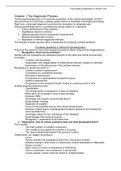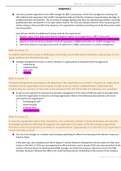Zusammenfassung
Summary Psychological Assessment with the MMPI-2 / MMPI-2-RF, ISBN: 9780415526333 Psychological Assessment
- Kurs
- Hochschule
- Book
This is a full summary of the book, divided per chapter, with notes from the professor
[ Mehr anzeigen ]






